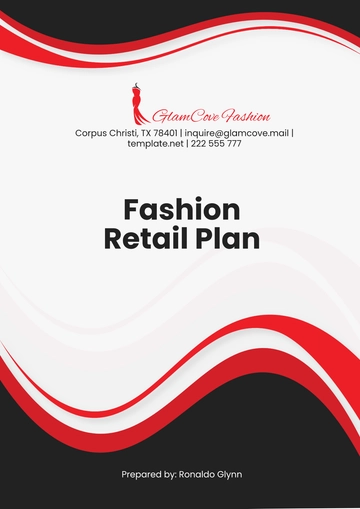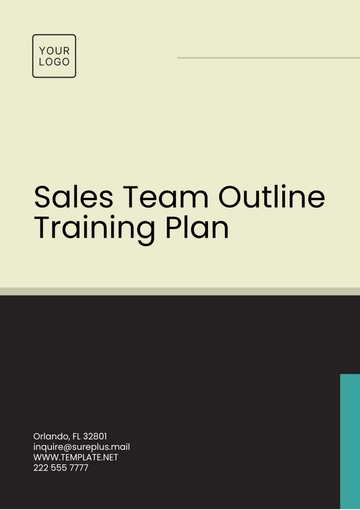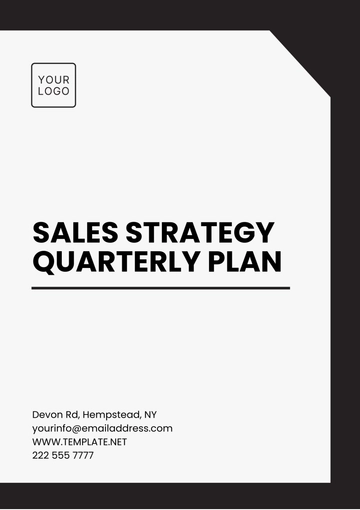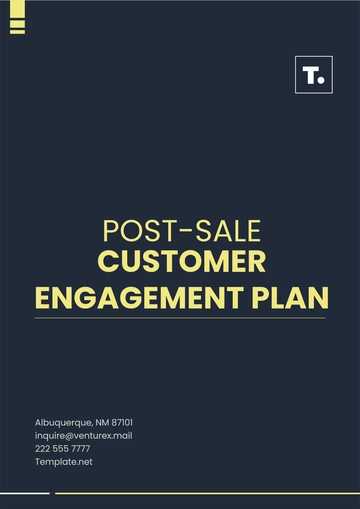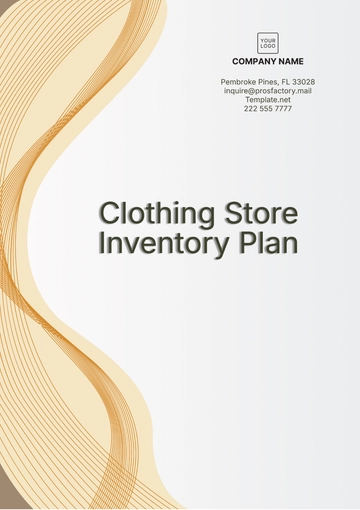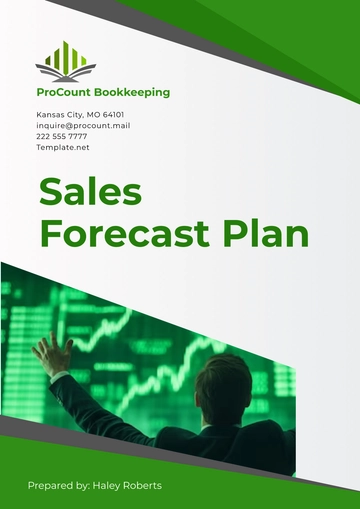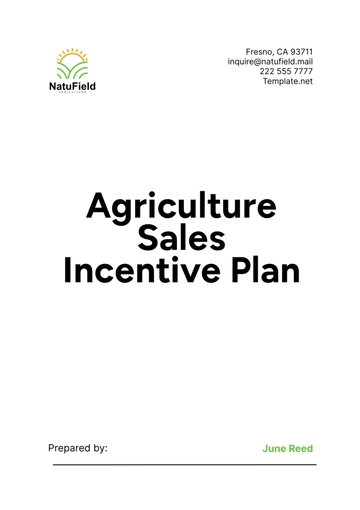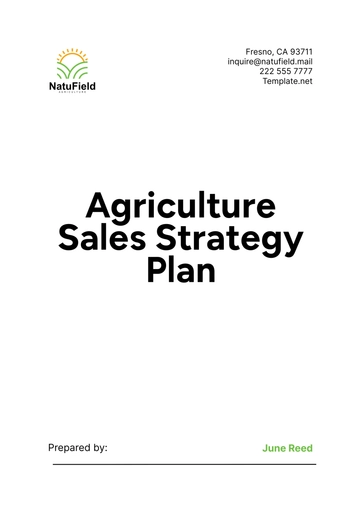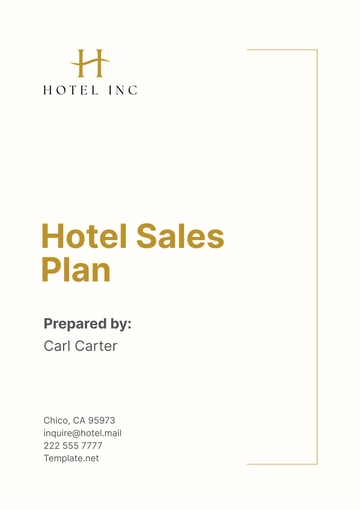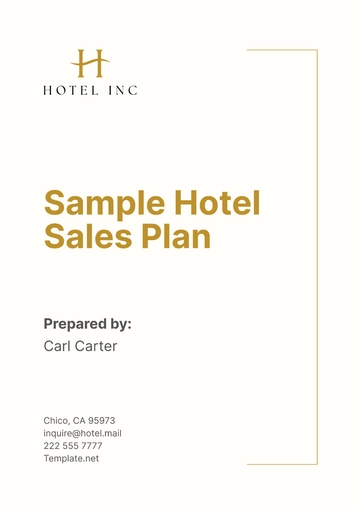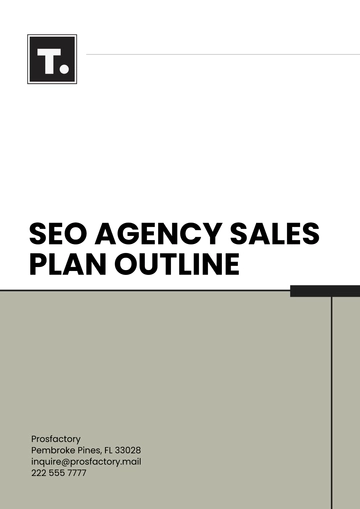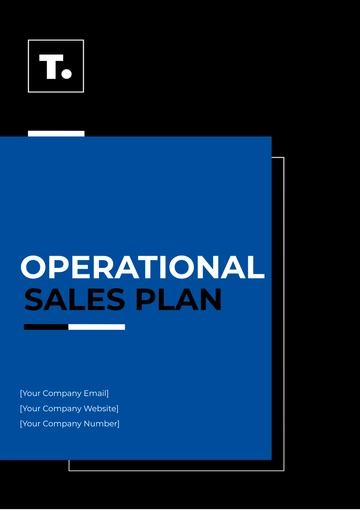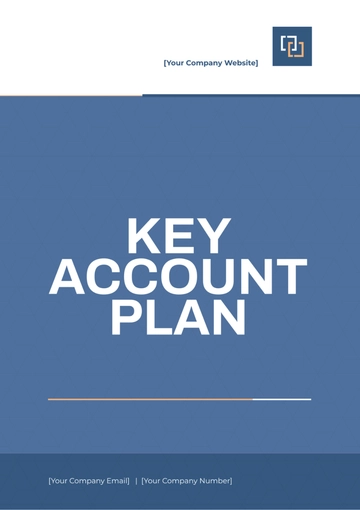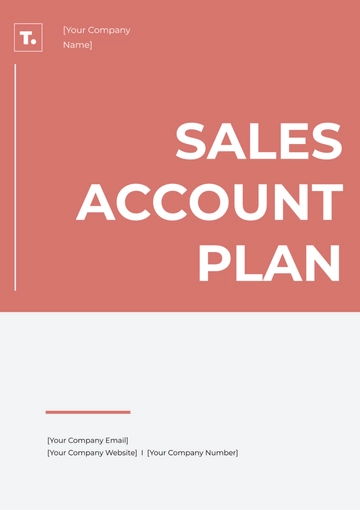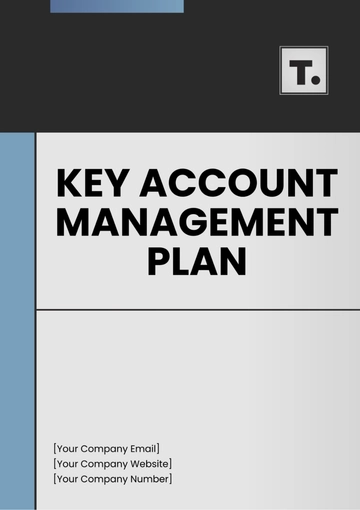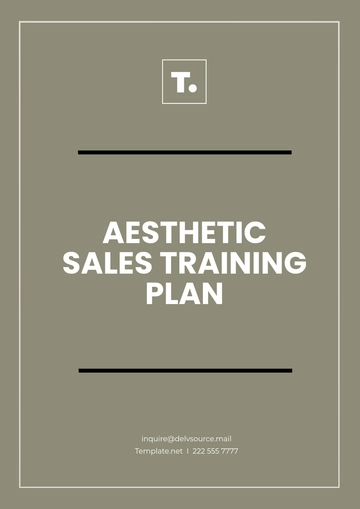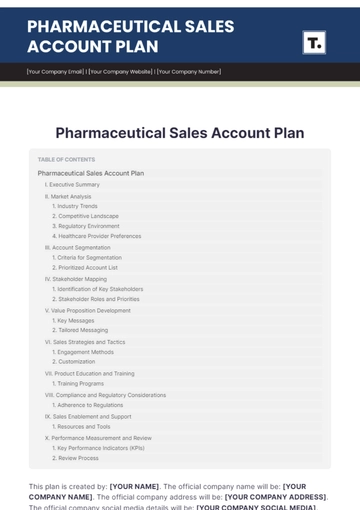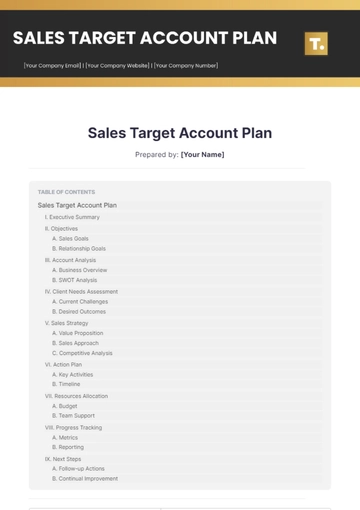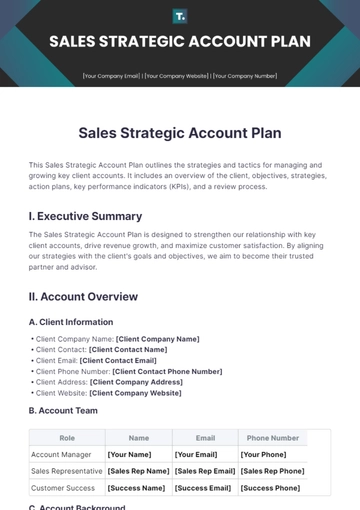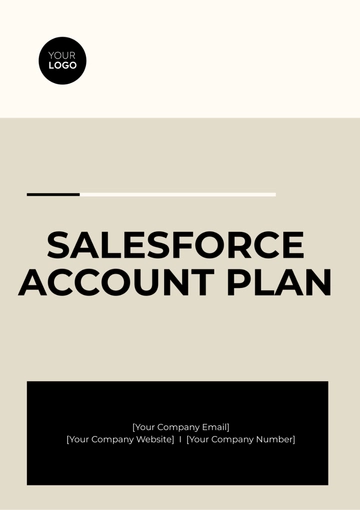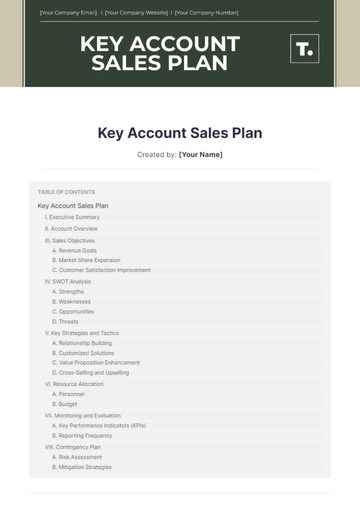Free Sales Annual Report on Incentive Plan Success Metrics
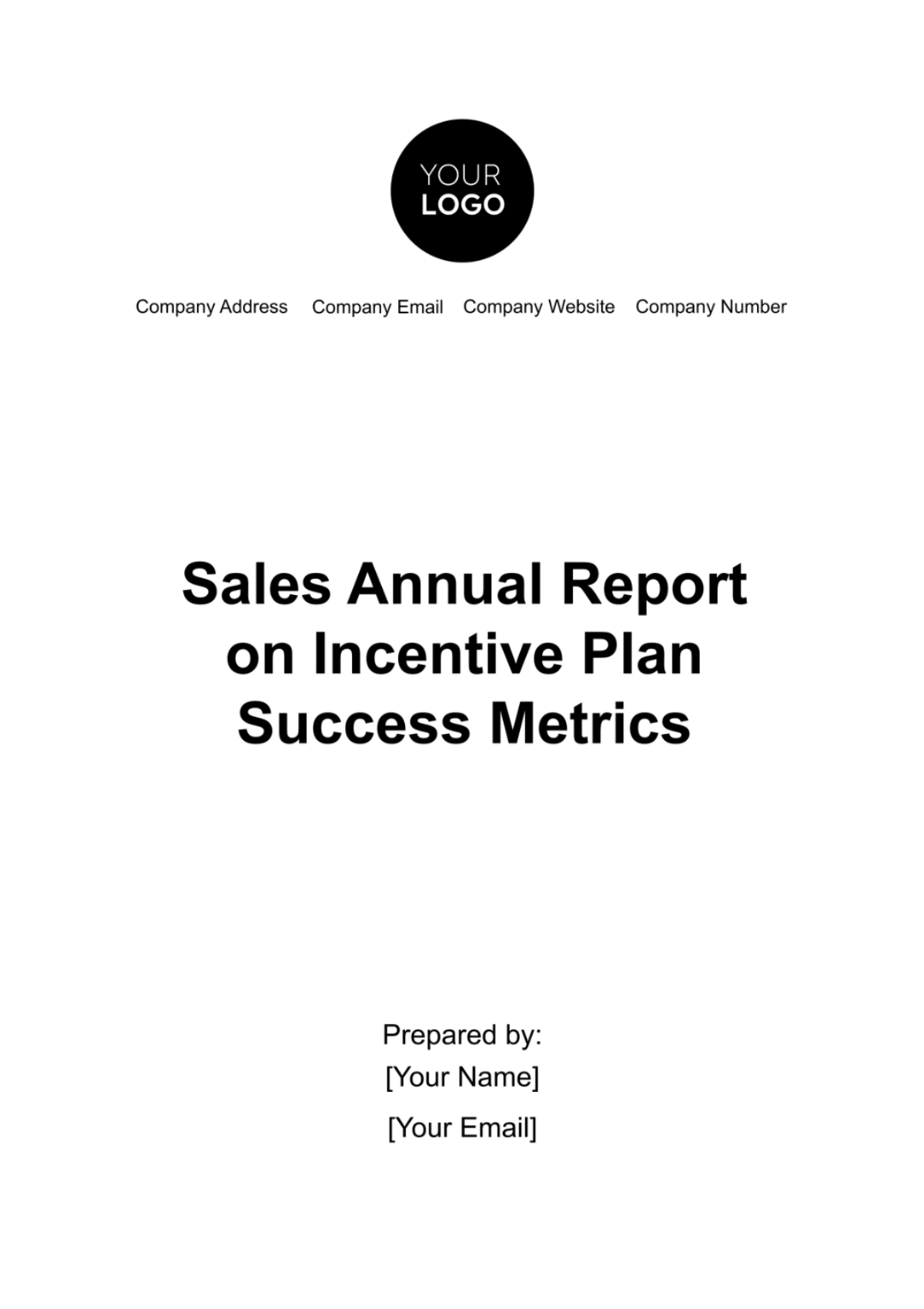
I. Executive Summary
Recent studies indicate that companies with well-aligned sales incentive plans can witness up to a [20%] improvement in sales performance. The purpose of this report is to give a detailed analysis of our sales incentive plan's effectiveness and the resulting ripples on our overall performance. With precise metrics at hand and qualitative feedback from our sales team, we have been able to delineate the value derived from our incentives in comparison to the industry benchmarks.
A. Overview
This report seeks to answer the questions: Has the plan catalyzed our sales? Has it fostered a healthier work environment? And, importantly, has it strengthened our relationship with key stakeholders? The answers to these queries lies in understanding the relationship between well-defined incentives and sales output. A previous case study highlighted how their revamped sales incentive plan led to a [25%] surge in sales within a single fiscal year.
B. Main Metrics
A commendable [15%] rise in sales, especially when compared with last year's growth, underscores the potency of our revamped incentive strategy. The [10%] uptick in employee satisfaction, as reflected in our internal survey, indicates a large number in our sales team. Furthermore, the [20%] growth in our key customer relationships show the peripheral benefits a motivated sales team can usher in.
C. Performance
Our sales milestones have been met and surpassed, but our sales approach was changed. As per the latest findings from our analysis, companies with tailored incentive plans can expect a [15%] increase in overall performance, and our trajectory seems to be echoing this sentiment. With those findings, we intend to study the successes and potential areas of improvement in our sales incentive plan.
II. Background & Introduction to the Incentive Plan
Recognizing the important role of the sales team as the frontline ambassadors of our brand, we introduced an incentive plan that is a strategic tool to exceed expectations. [Program Name] stands testament to our commitment to recognizing merit and fostering an environment where ambition meets collaboration.
A. Structure
The dual approach, rewarding both individual prowess and team synergy, ensured that while personal ambition was recognized, the essence of teamwork was not overshadowed. With rewards such as cash bonuses and intangible recognitions like promotions, the plan was designed to cater to diverse aspirations. Notably, the inclusion of holiday packages not only promised leisure but also became a testament to the company's commitment to work-life balance.
B. Historical Context
The year [2055] was a time when industry attrition rates were peaking at [15%], and retaining top talent became paramount. Through this plan, we not only aimed to boost our sales figures but also to carve out a niche where our top-performing salespeople felt valued, challenged, and inspired to stay. The ensuing years have only vindicated our foresight, with an impressive [12%] rise in sales numbers and a retention rate of [92%] amongst our top-performing talent.
C. Key Components
The [Program Name] program, specifically designed for our sales team, included several notable elements. Among these, the fully-paid trip to an exotic place was a highlight. This trip was more than a luxury vacation; it symbolized the highest level of sales achievement in our company. The attractive setting of beaches and clear waters was a testament to the hard work and success of our top sales team for the year, emphasizing the rewards of dedication, teamwork, and commitment to excellence.
III. Key Success Metrics Defined & Evaluated
This part of the report examines the effectiveness of the [Program Name] program using specific performance indicators. By comparing these metrics with past data, we aim to provide a clear understanding of both the tangible and intangible benefits of the program.
A. Sales Growth Rate
The program significantly increased our sales growth rate, from [5%] to [15%] in one year. This growth, higher than the industry average of [8%] as reported in [2056], demonstrates both our internal progress and our competitive edge in the industry.
B. Employee Satisfaction
Internal surveys showed a [10%] increase in employee satisfaction, from [70%] to [80%]. This improvement reflects a deeper sense of belonging and morale among our teams, correlating with increased productivity as suggested by a different case study.
C. Customer Feedback
The feedback from our key clients has been overwhelmingly favorable, with [85%] expressing positive sentiments. This high rate of satisfaction underscores the successful impact of our program on customer relations. Our sales teams, invigorated by the program, have demonstrated heightened dedication and engagement, leading to stronger, more robust client relationships. These enhanced interactions have not only solidified existing partnerships but also positioned us favorably for potential new collaborations.
D. Profitability
The [Program Name] program has proven to be a financial triumph, with a remarkable return on investment (ROI). For every dollar invested in the initiative, we have generated [$4] in sales, a figure that notably exceeds the industry's average ROI of [$2.5] per dollar. This exceptional performance is a clear indicator of the program's efficacy and strategic alignment with our business objectives. It not only reflects our adeptness in resource allocation and investment but also highlights our ability to drive substantial revenue growth. This success in profitability is a solid foundation for our ongoing and future endeavors, ensuring that we remain on a trajectory of sustainable and progressive growth.
IV. Performance Analysis by Department/Team
This analysis looks at performance across different departments and teams, highlighting successes and identifying areas for improvement.
A. Top Performers
The 1st Sales Division showcased exceptional performance, registering a remarkable [25%] increase in sales. This notable achievement can be attributed to their forward-thinking strategies and their successful penetration of new markets. The division's ability to innovate and adapt to changing market conditions was a key driver of their success. Their victory in winning the coveted an exclusive trip and their effective engagement with significant clients stand as clear evidence of their excellence and leadership within the company.
B. Underperformers
In contrast, the 2nd Sales Division encountered a set of unique challenges, resulting in a more moderate growth of [8%]. This outcome was influenced by a combination of external market forces, such as increased competition and market saturation, and internal factors like team restructuring and the introduction of new product lines. These elements collectively impacted the division's performance, highlighting the need for targeted strategies to address these specific issues.
C. Recommendations
To elevate the performance of the 2nd Sales Division, it is proposed that bespoke training programs be developed, leveraging the insights and best practices from the high-performing 1st Sales Division. These programs should focus on strategies to overcome market saturation and competitive pressures. Additionally, the implementation of a mentorship scheme, where experienced sales professionals from high-performing divisions mentor their counterparts in the Central Division, could facilitate knowledge transfer and invigorate the team with new ideas and approaches.
V. Comparative Analysis with Previous Years
This section presents a detailed comparison of our annual sales growth before and after the launch of the [Program Name] plan, providing insights into the plan's impact on our business trajectory.
A. Visual Data
B. Trends
An analysis of our historical data reveals that prior to [2055], our annual growth rate hovered around [4-6%]. However, the introduction of the [Program Name] initiative marked a significant turning point. Post-implementation, our growth rate escalated to an impressive [15%]. Despite some fluctuations, our performance has consistently outshined the pre-initiative figures. Strategic moves such as the acquisition of a corporation in [2055] played a crucial role in this accelerated growth, expanding our customer base and market reach.
C. External Factors
It's important to recognize that our performance is influenced not only by our internal strategies but also by external market conditions. For instance, the sales dip in the third quarter of [2056] correlated with a broader industry downturn. However, our adaptive strategies and the robust foundation of the [Program Name] plan enabled us to navigate these challenges effectively, minimizing the impact on our overall performance.
VI. Recommendations
The ongoing evaluation and refinement of our strategic initiatives are crucial for sustained success. The [Program Name] plan has been successful, but there is always potential for enhancement, especially within our sales divisions. Tailored strategies and interventions can further elevate our performance and outcomes.
A. Intermediate Incentive Programs
To foster continuous motivation and high performance, we suggest implementing intermediate incentive programs. This approach involves recognizing and rewarding teams that achieve significant milestones within the year
Mid-Year Milestone Rewards: Specifically, teams that reach [50%] of their annual sales targets by mid-year could be eligible for rewards. This strategy helps maintain momentum and focus throughout the year, rather than concentrating solely on year-end achievements.
Nature of Rewards: These rewards could take the form of team-building retreats or other motivational experiences. Such rewards not only serve as a token of appreciation but also enhance team cohesion, morale, and engagement.
B. Milestone Motivators
These are designed to provide regular checkpoints throughout the year, offering teams the opportunity to assess their progress and adjust their strategies accordingly.
Structure of Milestone Motivators: These motivators could be structured in various ways, such as quarterly targets or specific project completions. The key is to align them with the overall annual goals, ensuring they contribute to the larger objectives.
Benefits: By offering these motivators, we aim to alleviate the pressure associated with end-of-year targets. They serve as a continuous source of encouragement, keeping teams aligned and focused on their objectives.
C. Feedback and Adaptation
Regular feedback sessions accompanying these milestones will provide valuable insights into the effectiveness of our strategies and the areas that require adjustments.
Employee Feedback: Encouraging feedback from employees on these initiatives will help in fine-tuning the incentive programs to better suit their needs and preferences.
Adaptation to Market Dynamics: As market conditions and team dynamics evolve, these incentive programs should be adaptable to ensure they remain relevant and effective.
D. Refinements
Balancing Short-term and Long-term Goals: While mid-year incentives focus on immediate targets, they should be carefully balanced with the long-term objectives of the company. This ensures that while short-term successes are celebrated, the overarching goals are not overshadowed.
Customization According to Division Needs: Different divisions may have varying challenges and opportunities. Tailoring these incentive programs to fit the unique needs of each division can maximize their effectiveness.
Integration with Professional Development: Incorporating elements of professional development into these incentives, such as training opportunities or skill-building workshops, can add value to the rewards and contribute to the long-term growth of the employees.
By implementing these incentive strategies, we aim to cultivate a culture of continuous achievement and improvement. This approach not only acknowledges and rewards immediate successes but also aligns them with our broader organizational goals.
VII. Conclusion
We propose the implementation of a "Quarterly Incentive Impact Review" system. This approach involves regular, comprehensive evaluations of our incentive strategies, including data analysis, feedback collection, and brainstorming sessions every quarter. This system will enable us to promptly identify and respond to emerging trends, celebrate successes, address challenges, and refine our strategies in real-time.
- 100% Customizable, free editor
- Access 1 Million+ Templates, photo’s & graphics
- Download or share as a template
- Click and replace photos, graphics, text, backgrounds
- Resize, crop, AI write & more
- Access advanced editor
Discover the ultimate tool for evaluating your sales incentive plans with the Sales Annual Report on Incentive Plan Success Metrics Template from Template.net. This editable and customizable template boasts an intuitive AI Editor Tool, empowering you to effortlessly analyze performance metrics, compare goals, and derive actionable insights. Elevate your sales strategy with precision and ease.
You may also like
- Finance Plan
- Construction Plan
- Sales Plan
- Development Plan
- Career Plan
- Budget Plan
- HR Plan
- Education Plan
- Transition Plan
- Work Plan
- Training Plan
- Communication Plan
- Operation Plan
- Health And Safety Plan
- Strategy Plan
- Professional Development Plan
- Advertising Plan
- Risk Management Plan
- Restaurant Plan
- School Plan
- Nursing Home Patient Care Plan
- Nursing Care Plan
- Plan Event
- Startup Plan
- Social Media Plan
- Staffing Plan
- Annual Plan
- Content Plan
- Payment Plan
- Implementation Plan
- Hotel Plan
- Workout Plan
- Accounting Plan
- Campaign Plan
- Essay Plan
- 30 60 90 Day Plan
- Research Plan
- Recruitment Plan
- 90 Day Plan
- Quarterly Plan
- Emergency Plan
- 5 Year Plan
- Gym Plan
- Personal Plan
- IT and Software Plan
- Treatment Plan
- Real Estate Plan
- Law Firm Plan
- Healthcare Plan
- Improvement Plan
- Media Plan
- 5 Year Business Plan
- Learning Plan
- Marketing Campaign Plan
- Travel Agency Plan
- Cleaning Services Plan
- Interior Design Plan
- Performance Plan
- PR Plan
- Birth Plan
- Life Plan
- SEO Plan
- Disaster Recovery Plan
- Continuity Plan
- Launch Plan
- Legal Plan
- Behavior Plan
- Performance Improvement Plan
- Salon Plan
- Security Plan
- Security Management Plan
- Employee Development Plan
- Quality Plan
- Service Improvement Plan
- Growth Plan
- Incident Response Plan
- Basketball Plan
- Emergency Action Plan
- Product Launch Plan
- Spa Plan
- Employee Training Plan
- Data Analysis Plan
- Employee Action Plan
- Territory Plan
- Audit Plan
- Classroom Plan
- Activity Plan
- Parenting Plan
- Care Plan
- Project Execution Plan
- Exercise Plan
- Internship Plan
- Software Development Plan
- Continuous Improvement Plan
- Leave Plan
- 90 Day Sales Plan
- Advertising Agency Plan
- Employee Transition Plan
- Smart Action Plan
- Workplace Safety Plan
- Behavior Change Plan
- Contingency Plan
- Continuity of Operations Plan
- Health Plan
- Quality Control Plan
- Self Plan
- Sports Development Plan
- Change Management Plan
- Ecommerce Plan
- Personal Financial Plan
- Process Improvement Plan
- 30-60-90 Day Sales Plan
- Crisis Management Plan
- Engagement Plan
- Execution Plan
- Pandemic Plan
- Quality Assurance Plan
- Service Continuity Plan
- Agile Project Plan
- Fundraising Plan
- Job Transition Plan
- Asset Maintenance Plan
- Maintenance Plan
- Software Test Plan
- Staff Training and Development Plan
- 3 Year Plan
- Brand Activation Plan
- Release Plan
- Resource Plan
- Risk Mitigation Plan
- Teacher Plan
- 30 60 90 Day Plan for New Manager
- Food Safety Plan
- Food Truck Plan
- Hiring Plan
- Quality Management Plan
- Wellness Plan
- Behavior Intervention Plan
- Bonus Plan
- Investment Plan
- Maternity Leave Plan
- Pandemic Response Plan
- Succession Planning
- Coaching Plan
- Configuration Management Plan
- Remote Work Plan
- Self Care Plan
- Teaching Plan
- 100-Day Plan
- HACCP Plan
- Student Plan
- Sustainability Plan
- 30 60 90 Day Plan for Interview
- Access Plan
- Site Specific Safety Plan

